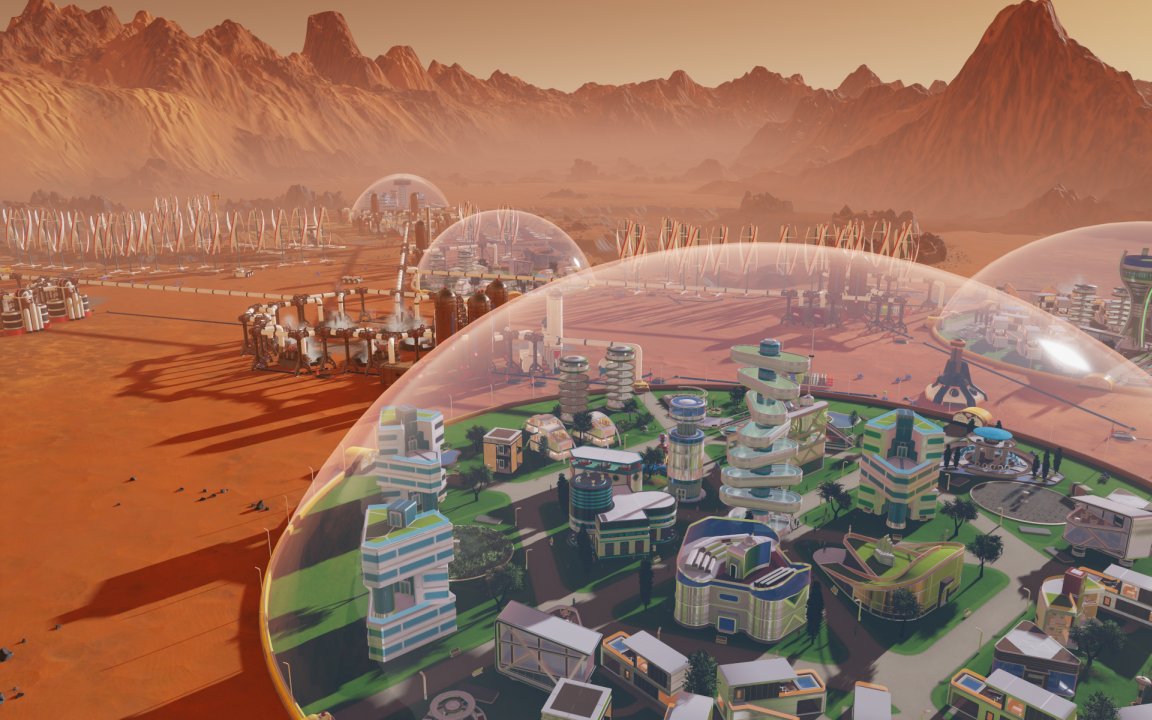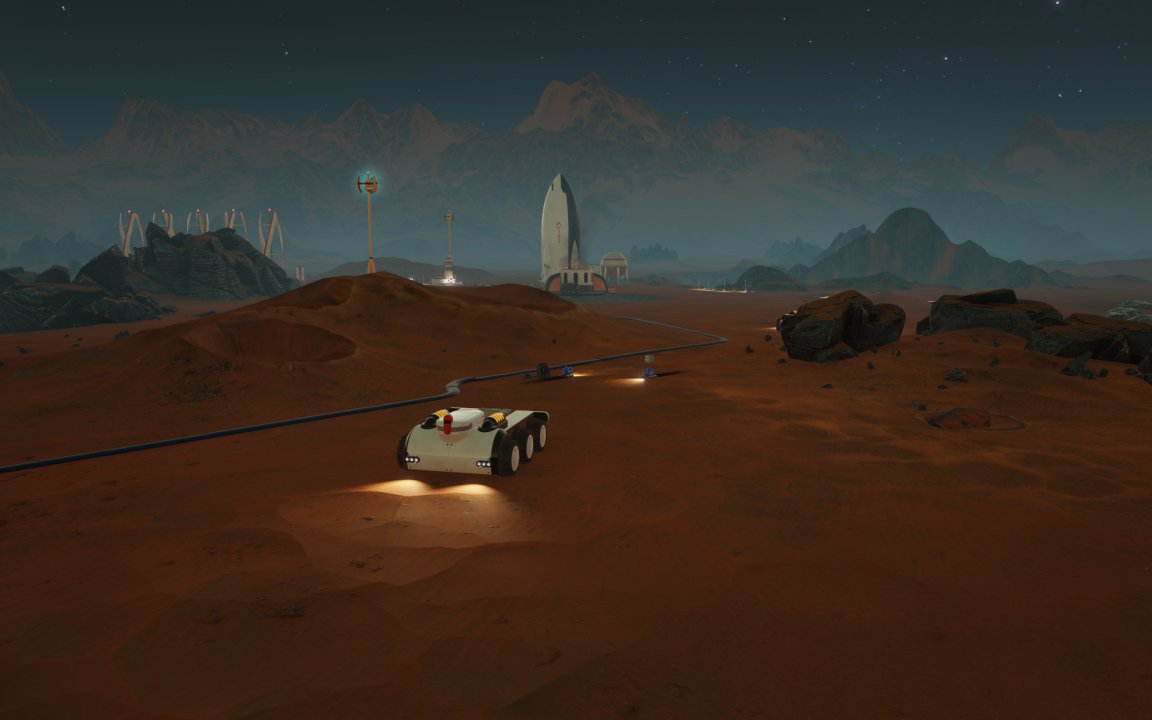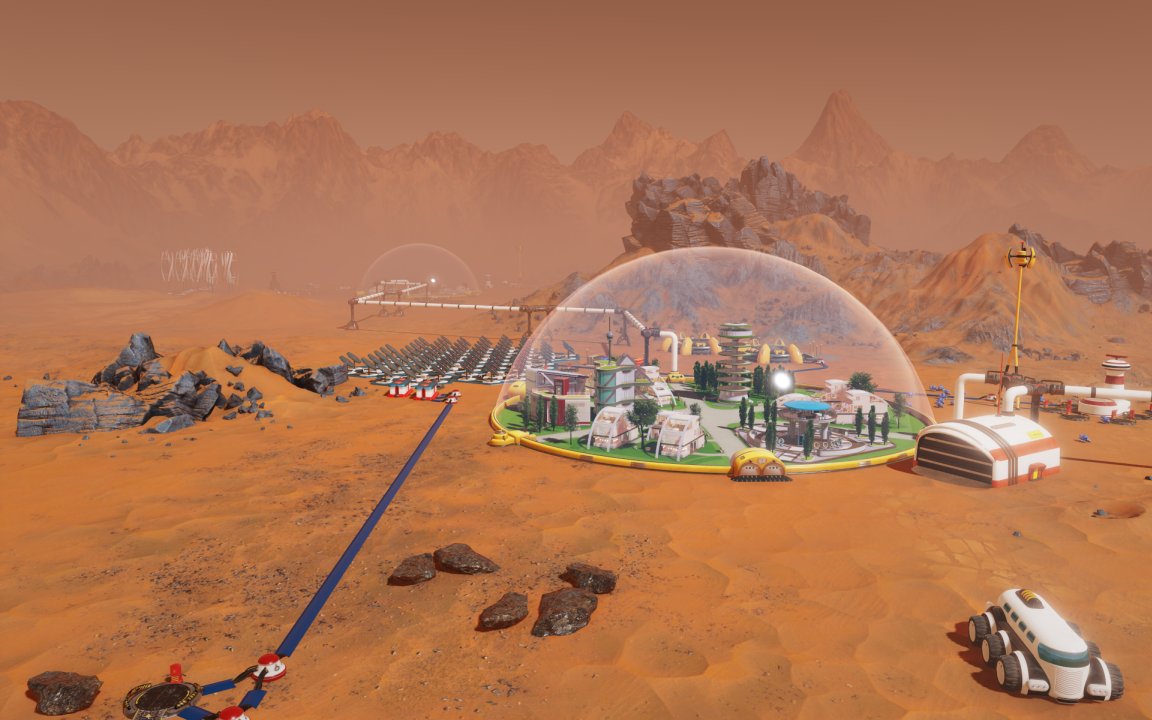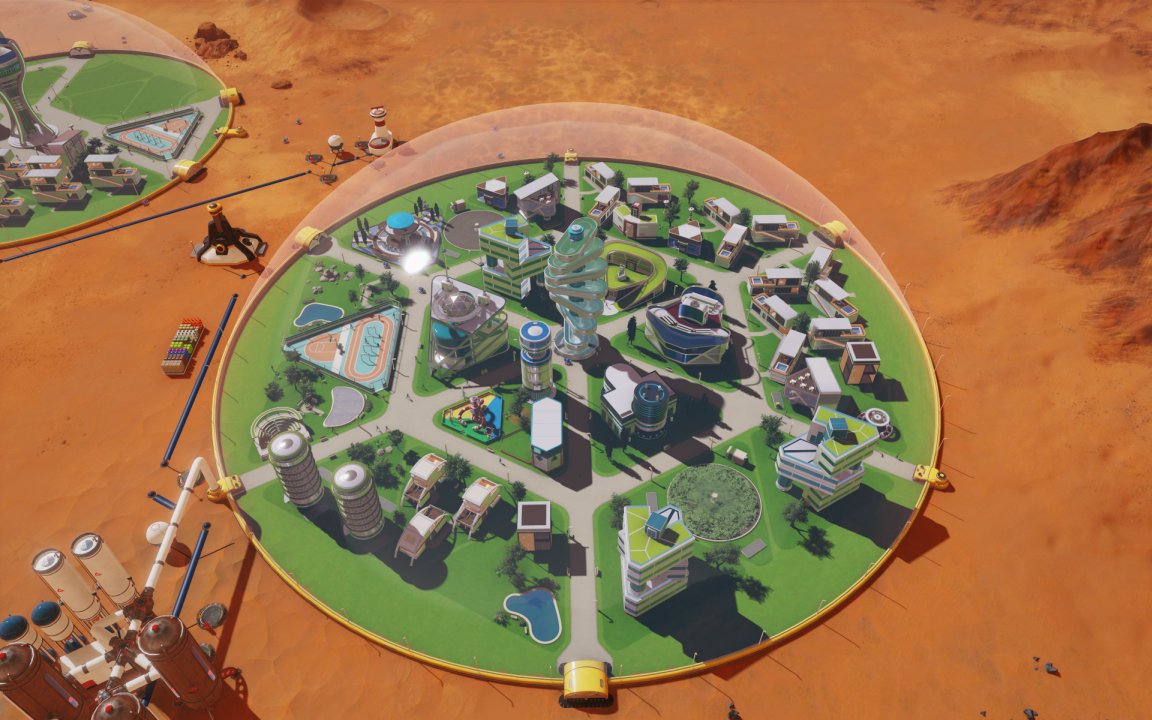Surviving Mars Review
Colonizing the Red Planet turns out to be rather dull
Developers Haemimont Games are best known for their work on the long running Tropico franchise, an enjoyable and well balanced island management game with plenty of personality and quirks. Their only project away from the strategy game genre was the average action RPG Victor Vran. As such, the team has decided to return to their strengths, and while Tropico 6 is still on the way, we have an entirely new title in Surviving Mars. Teaming up with the grand strategy publisher Paradox Interactive, Surviving Mars attempts to be a complex colony management game for brave explorers of the Red Planet, but ends up biting off a bit more than it can chew.

The basic flow of the gameplay in Surviving Mars feels like a mix of Civilization and Tropico. Unlike most other games in the genre however, there is no storyline to follow or scenarios to complete. Instead, every round is a sandbox experience, though there are a huge number of factors that can be tweaked. For example, before setting off to the Red Planet you choose who is sponsoring you. It could be a collection of nations, a private company, or a specific country. This choice affects how much funding you get, and what the expectations are for a successful relationship with Earth. You also choose your commander profile, which dictates what passive bonuses you’ll get (think of picking a leader in Civ). You can also pick a Mystery (a special event that will occur at some point in the game), and some other effects. On the surface, this seems like it would add tons of replay value, but in practice you’re just picking a variety of conditions that will affect the difficulty of the round.
Just like the initially daunting list of variables that you need to setup before taking off into space, the game itself could have also used more time easing players in. Since there is no campaign or scenario selection, there are no missions that warm you up to the game’s main concepts; you’re just dumped into a sandbox map. There are no tutorials, and the in-game tips range wildly in their helpfulness. Combine that with the somewhat convoluted UI, and Surviving Mars can be a rather tough game to get into. Perhaps fans of Paradox Interactive would expect nothing less, but this is actually a case of underwhelming design rather than the incredible depth that their titles usually feature. Things like the lack of good reporting on your resource production and consumption, and materials sometimes just not adding up to the values that are displayed, proved to be an annoying factor.
Once ready, you begin the colonization of Mars by choosing a landing spot on the map, hopefully containing some natural resources to give you a head start. From there, you can queue up scans of all nearby sectors, which eventually reveals resources and points of interest. You can still move your units around freely to unexplored sectors, but chances are you won’t want to or be able to grow aggressively anyway. With the landing successful, you get a handful of units to start doing work. The RC Explorer is for driving about and collecting bonus technologies, the RC Transport rover can be used to move materials around between stockpiles, and the drone rover can transport your worker bots between locations.

Your first tasks are to generate power and begin gathering resources. Concrete, water, oxygen and various metals are considered basic resources, and can be gathered either by the drones or by placing gathering structures. You can also place storage plateaus for these materials, and the worker drones will automatically ferry the materials from gathering site to the resource hubs. Gathering buildings produce waste rock, a somewhat annoying mechanic, which must be stored until you’ve unlocked a refining facility that can make it into useful concrete. You can also gather advanced resources such as fuel, but these require humans to be present. These worker drones are key, but they cannot stray too far from their home base (be that a shuttle, a rover, or a Drone Hub building), which means your operational capacity is limited to a certain distance. Mid and late-game expansion involves essentially taking a bunch of bots to a new resource-rich location and starring another set of buildings from scratch. You’re basically building up a series of separate bases, rather than a whole cohesive colony (or city). In this, micromanagement again plays an annoying role, as your resource piles are not universally shared. You need to setup and manually transport goods so that your robots can begin construction in a new location. This becomes annoying after a while, as you're still manually managing the same resource transports whether you’re 1 or 20+ hours into the game. Further to that, vehicles need fuel and must be parked by hand within range of a power source to charge up.
At the outset, there are just a handful of structures available, but of course as the game goes on more become available with increased production, but also higher operational requirements. Power can be gathered from solar panels and wind, as well as straightforward generators. You then need to manually lay down power lines to connect structures together, and the paths have to be laid meticulously by hand. You don’t simply drop in a building though – like in Tropico, you place the outlines of the structure, and then the AI sends available worker drones to fetch the required materials, and begin construction. You can choose the importance of each structure, shut it on/off, and request repairs. Just like your rovers, each building has its own functions and can be micromanaged.
Surviving Mars has a few unique mechanics, such as days (sols), as the sunlight allows your solar generators to create power, but for a limited amount of daytime. During the night, you hopefully have other types of generators running. You also have to manage shuttles that can be sent to/from Earth and that play a key role in getting you resources and building blueprints that are otherwise unattainable on Mars. The shuttles take time to travel, and to fuel between trips, and of course cost money and have limited storage space. Because the atmosphere is hostile, you’ll have to build some domes for the humans to live in; these need power, oxygen, water, food, and individual buildings must be constructed inside as well.

With the base humming along, it may be time for life. The unique approach of Surviving Mars is that you choose when the colonists begin to arrive, essentially letting you create a robust economy and safe habitat before a single human steps foot on the surface. This lets you be very safe and build for as long as you want (the game lacks any deadlines or timed objectives), but that does get boring; you can also choose to have humans arrive as soon as viably possible, but that adds their burdens to your daily list of considerations as their social and survival gameplay elements now must be considered. Humans do have their benefits – only they can extract advanced resources, speed up research, and so on.
Managing humans becomes its own subset of resource tinkering though. They need the abovementioned necessities to survive, but you’ve also got to worry about their social well-being. Playgrounds and schools must be built for future generations, entertainment facilities must be stocked lest you want to encounter suicides and extreme homesickness. Like the worker bots, you can’t control humans directly, but there is still needless complexity added in the way of traits and personalities, in addition to job-related skills. Just like an overabundance of pre-game conditions and modifiers to choose from, wading through the endless human variations seems dull and pointless. Sure, you’d ideally want to choose some young adventure seeking and hard working folks to join the colony, but eventually it becomes a mish mash of all types. It’s just too difficult to care about these virtual people, and it feels more annoying than Civ, Tropico, or The Sims.
Humans do help with research, if you build the appropriate structure in a dome and are lucky enough for the scientists to choose to work there. The research tree consists of six linear branches, each eventually unlocking passive bonuses for all sorts of activities, from resource gathering to fuel efficiency. You also unlock better versions of structures, and so on. The research time depends on how many people you’re throwing towards the science point generation, but for the most part the entire mechanic can be ignored. You can queue up research, and just forget about it for a few hours at a time as, again, the bonuses can be useful but they are hardly game-changing. It's just more modifiers to fiddle around with. If you really want, you can outsource the research to Earth for a price.

As you’re trying to keep everyone happy and the bases growing and alive, you’ll have to contend with random events as well. From dust storms to meteors, your infrastructure will be damaged, and even just come apart from regular wear and tear. But, as long as some worker drones are nearby, there’s no action required, apart from ensuring resources are available in the area. Another thing that could happen is a Mystery event, the closest thing the game has to a story. Various strange events occur that you’ll have to deal with, and their difficulty and reward are predetermined. You can choose to experience a specific event or a random one when setting up the game. Dealing with these events is fairly tough at first because you’re not sure what will happen, but in subsequent playthroughs it becomes straightforward.
Despite all this, Surviving Mars is a very slow burn. Sure, it can be extremely tough just because you’ve put yourself at a huge resource and random event disadvantage, but for the most part you’re simply micromanaging things, placing buildings, and not much else happens. A lot of games can fit that description, but those games don’t require that you spend almost all of your time in the fastest time forwarding mode, in order to feel like you’re making some progress. The game is slow, and it takes a while for anything to get built, researched, or for the next shuttle from Earth to arrive. It also doesn’t help that Mars is quite bland, with a flat and featureless terrain, and the same looking grid for you to expand on each time you start a new game. It lacks the liveliness of Tropico, or the engaging presentation of Civilization. The audio design is passable, with some basic sound effects and a few radio stations of varying genres.
As such, all that is left on the barren surface of Surviving Mars are a few well implemented unique features, surrounded by needless complexity and boring micromanagement. An abundance of modifiers – from starting conditions to research trees and human traits – doesn’t make up for a lack of proper tutorials and campaigns. The overall design and requirement for very detached settlements prevents the game from ever reaching the grand scale of a more traditional city building sim. Lastly, the already slow pace of the game is bogged down by the plain presentation. There will be some that find Surviving Mars alluring, but most players will probably find the experience to be a bit too convoluted and slow.
 Comments
Comments


















